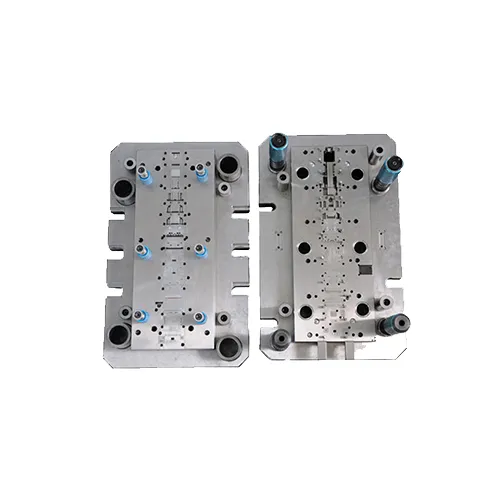An Introduction to CNC Machining Parts: Precision in Modern Manufacturing
2024-08-22
CNC (Computer Numerical Control) machining has revolutionized the manufacturing industry by enabling the production of highly precise and complex parts with unmatched efficiency. CNC machining parts are integral to various industries, including automotive, aerospace, electronics, and medical devices. In this blog, we’ll explore what CNC machining parts are, the types of materials used, and the benefits they bring to modern manufacturing.

1. What Are CNC Machining Parts?
CNC machining parts are components created through the CNC machining process, which involves the use of computer-controlled machines to remove material from a workpiece. These machines, such as lathes, mills, and routers, follow pre-programmed instructions to cut, drill, and shape materials into specific designs with extreme accuracy.
- Precision and Complexity: CNC machines can produce parts with tight tolerances and intricate geometries that would be difficult or impossible to achieve with manual machining.
- Repeatability: Once a CNC machine is programmed, it can produce identical parts consistently, making it ideal for large-scale production.
2. Materials Used in CNC Machining
One of the key advantages of CNC machining is its ability to work with a wide range of materials, each suited to different applications:
- Metals: Common metals used in CNC machining include aluminum, steel, stainless steel, brass, and titanium. These materials are chosen for their strength, durability, and ability to withstand high stress and temperatures.
- Plastics: CNC machining also works well with plastics such as ABS, polycarbonate, and nylon. These materials are often used in applications requiring lightweight, corrosion-resistant parts.
- Composites: Advanced composites like carbon fiber and fiberglass are also machined using CNC for high-performance applications in industries like aerospace and motorsports.
3. Types of CNC Machining Processes
CNC machining encompasses several processes, each suited to different types of parts and applications:
- CNC Milling: In milling, a rotating cutting tool moves across the workpiece to remove material, creating shapes, holes, and slots. It’s used for producing flat and complex surfaces.
- CNC Turning: Turning involves rotating the workpiece while a stationary cutting tool removes material. It’s commonly used to create cylindrical parts, such as shafts and rods.
- CNC Drilling: Drilling is used to create precise holes in a workpiece, often as part of a larger machining process.
- CNC Grinding: Grinding involves using a rotating abrasive wheel to achieve a smooth finish on metal parts, often to improve surface quality and dimensional accuracy.
4. Benefits of CNC Machining Parts
CNC machining offers several advantages that make it the preferred method for producing high-quality parts:
- High Precision: CNC machines can achieve extremely tight tolerances, often within a few microns, ensuring parts meet exact specifications.
- Efficiency: CNC machining is highly efficient, with the ability to produce parts quickly and in large quantities without sacrificing quality.
- Versatility: The wide range of materials and machining processes available makes CNC suitable for a variety of industries and applications.
- Consistency: CNC machines produce identical parts with minimal variation, ensuring consistency across production runs.
- Cost-Effective: While the initial setup cost may be higher, CNC machining becomes cost-effective in large-scale production due to reduced labor costs and material waste.
5. Applications of CNC Machining Parts
CNC machining parts are essential in many industries, contributing to the production of everything from everyday items to highly specialized components:
- Automotive: CNC machined parts are used in engines, transmissions, and other critical systems in vehicles.
- Aerospace: The aerospace industry relies on CNC machining for precision parts like turbine blades, landing gear components, and structural elements.
- Medical Devices: CNC machining produces parts for surgical instruments, prosthetics, and diagnostic equipment, where accuracy is crucial.
- Electronics: CNC machining is used to create housings, connectors, and heat sinks for electronic devices.
Conclusion
CNC machining parts are at the heart of modern manufacturing, providing the precision, efficiency, and versatility needed to produce high-quality components for a wide range of industries. As technology continues to advance, CNC machining will play an even greater role in shaping the future of manufacturing, enabling the creation of innovative products with ever-increasing complexity and precision.


